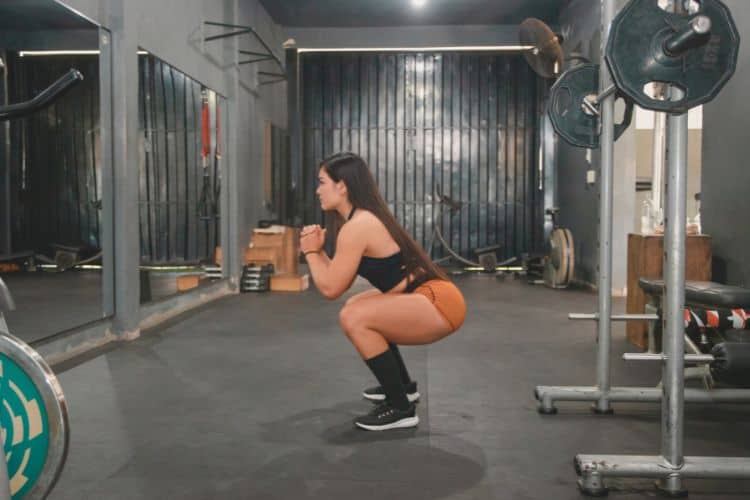Sign up for workout ideas, training advice, reviews of the latest gear and more.






Back pain, often seen as a modern-day scourge, is increasingly prevalent among women across all age groups. Whether due to long hours at the office, post-pregnancy, osteoporosis, or poor posture, back pain can severely affect one’s quality of life. The good news is that with regular and appropriate exercise, many women can manage back pain, if not alleviate, this condition.
Back pain in women may arise from a range of factors:
Muscle or Ligament Strain: Lifting heavy objects or sudden movements can strain back muscles and spinal ligaments.
Posture: Hours spent hunched over phones, laptops, or books can cause or aggravate back pain.
Hormonal Changes: Conditions like pregnancy can lead to back pain due to a shift in the body’s center of gravity and hormonal changes.
Osteoporosis: This condition can cause vertebral fractures, leading to significant pain.
Stress: Emotional stress can manifest as physical tension in the muscles.
Regularly incorporating back exercises can have manifold benefits:
Strengthens Muscles: Helps support the spine, reducing the likelihood of pain.
Improves Flexibility: Stretches the muscles and ligaments, preventing stiffness and injury.
Boosts Blood Circulation: Increased blood flow promotes healing and reduces inflammation.
Relieves Stress: Exercise releases endorphins, the body’s natural painkillers.
While there are numerous exercises, we have listed ones specifically beneficial for women. However, always consult with a healthcare professional before starting any exercise regimen.
Pelvic Tilts: Back Pain Exercise
Cat-Cow Stretch
Child’s Pose
Bridge Exercise: Back Pain Exercise
Knee-to-Chest Stretch
Wall Sit
Stay Consistent: Consistency is key. Integrate these exercises into your daily routine for optimum benefits.
Prioritize Form: Ensure you maintain the right posture to avoid causing further injury.
Listen to Your Body: If an exercise causes pain beyond mild discomfort, stop and seek expert advice.
Stay Hydrated: Drink water to support muscle function and flexibility.
Warm Up: Always warm up with gentle stretches or a short walk to prepare the body for exercise.
Further Insights into Back Pain for Women
While the exercises mentioned can significantly help alleviate back pain, it’s crucial to understand other complementary approaches and deeper insights into the problem. This comprehensive view can empower women to address back pain holistically.
Women’s bodies go through numerous hormonal changes throughout their lifetime, from menstruation to pregnancy, and later, menopause. Each stage brings about its set of challenges. For example:
Menstruation: Hormonal fluctuations can lead to muscle and joint pain, affecting the back. Regular, gentle stretching during this time can be beneficial.
Pregnancy: The added weight and shift in the center of gravity can strain the back. Prenatal exercises, under expert guidance, can be beneficial in these cases.
Menopause: Decreased bone density and muscle mass during menopause can make women more susceptible to back pain. Weight-bearing exercises can help increase bone density and reduce this risk.
Yoga and Pilates have gained massive popularity as tools to combat back pain. Their focus on alignment, strength, and flexibility makes them particularly effective.
Yoga: Poses such as Downward-Facing Dog, Sphinx Pose, and Supine Twist can be beneficial. However, it’s essential to ensure that the poses suit your pain level and physical ability. Joining a beginner’s class or practicing under an experienced instructor is recommended.
Pilates: This form focuses on core strength, which is crucial for back support. Pilates exercises, like The Saw, The Swan, and The Pelvic Curl, can be integrated into your routine for better spinal health.
Several everyday habits can unknowingly contribute to or exacerbate back pain.
Ergonomics: Ensure your workstation is back-friendly. Your computer screen should be at eye level, and your chair should support the curve of your spine.
Footwear: High heels can strain your lower back. Opt for shoes with good arch support and a low heel. Save the stilettos for special occasions!
Diet: Maintaining a healthy weight can reduce the strain on your back. Incorporate calcium and vitamin D-rich foods to support bone health.
Mindfulness and Meditation: Chronic pain is not just physical but has a psychological component. Incorporating mindfulness practices can help in managing the mental aspect of pain, thus offering holistic relief.
While exercising and staying active are vital, never underestimate the power of rest. Your body heals and rejuvenates during this time. Ensure you:
Sleep Well: Aim for 7-9 hours of sleep. Invest in a good mattress and pillows that support your spine.
Take Breaks: If your job requires sitting for extended periods, take short breaks every hour to stretch or walk around.
Manage Stress: Chronic stress can lead to muscle tension. Find relaxation techniques, such as deep breathing or meditation, that work for you.
While exercises and lifestyle changes help, sometimes the problem might be more profound. Don’t hesitate to consult:
Physical Therapists: They can provide tailored exercises and advice based on your unique condition.
Chiropractors: They specialize in treating musculoskeletal disorders, especially those of the spine.
Orthopedic Surgeons: In cases of severe back problems, such as disc herniations or spinal injuries, seeking a consultation can be beneficial.
Back pain can be a significant hindrance, but armed with knowledge, appropriate exercise, and a holistic approach, women can reclaim their active lives. Understand the root cause of your pain, be consistent with your exercises, and remember that a combination of physical activity, mindfulness, and professional advice can pave the path to a healthier back and a happier life.
Stay up to date on the latest women’s health, fitness and lifestyle trends and tips.